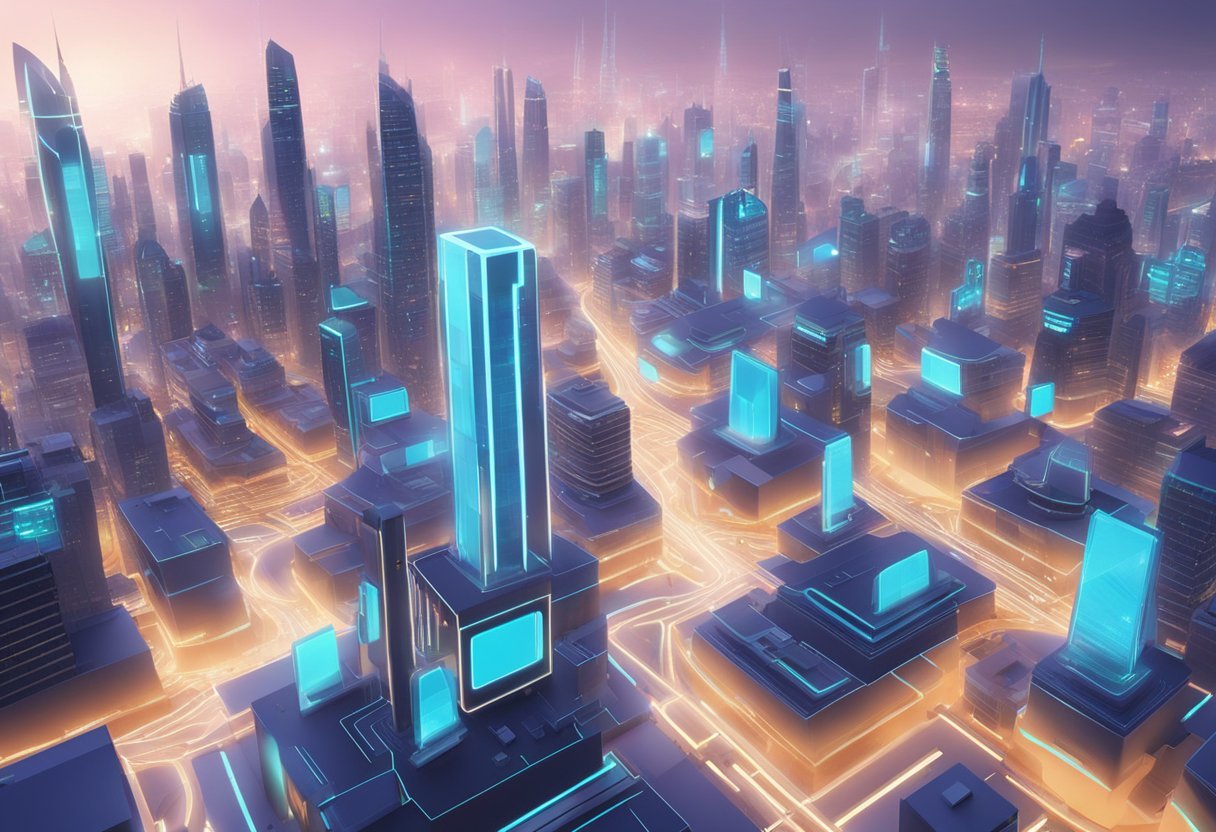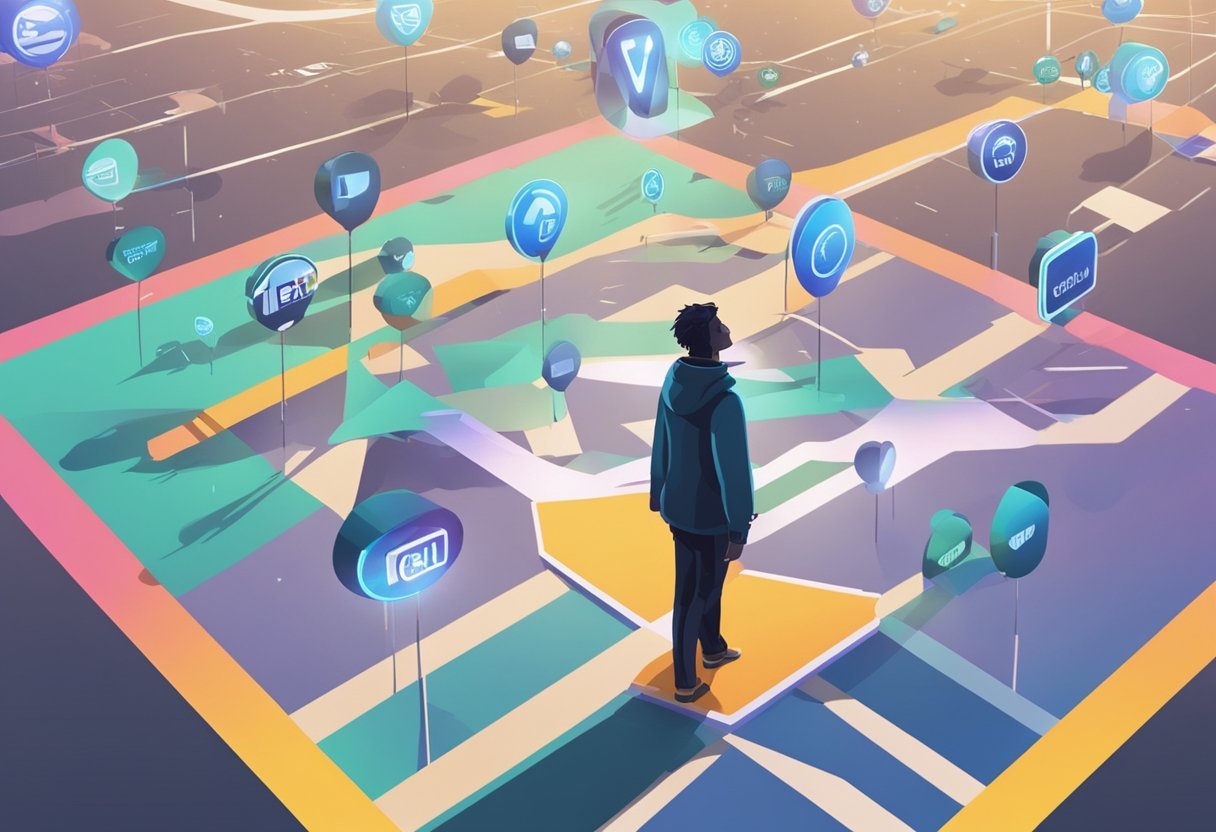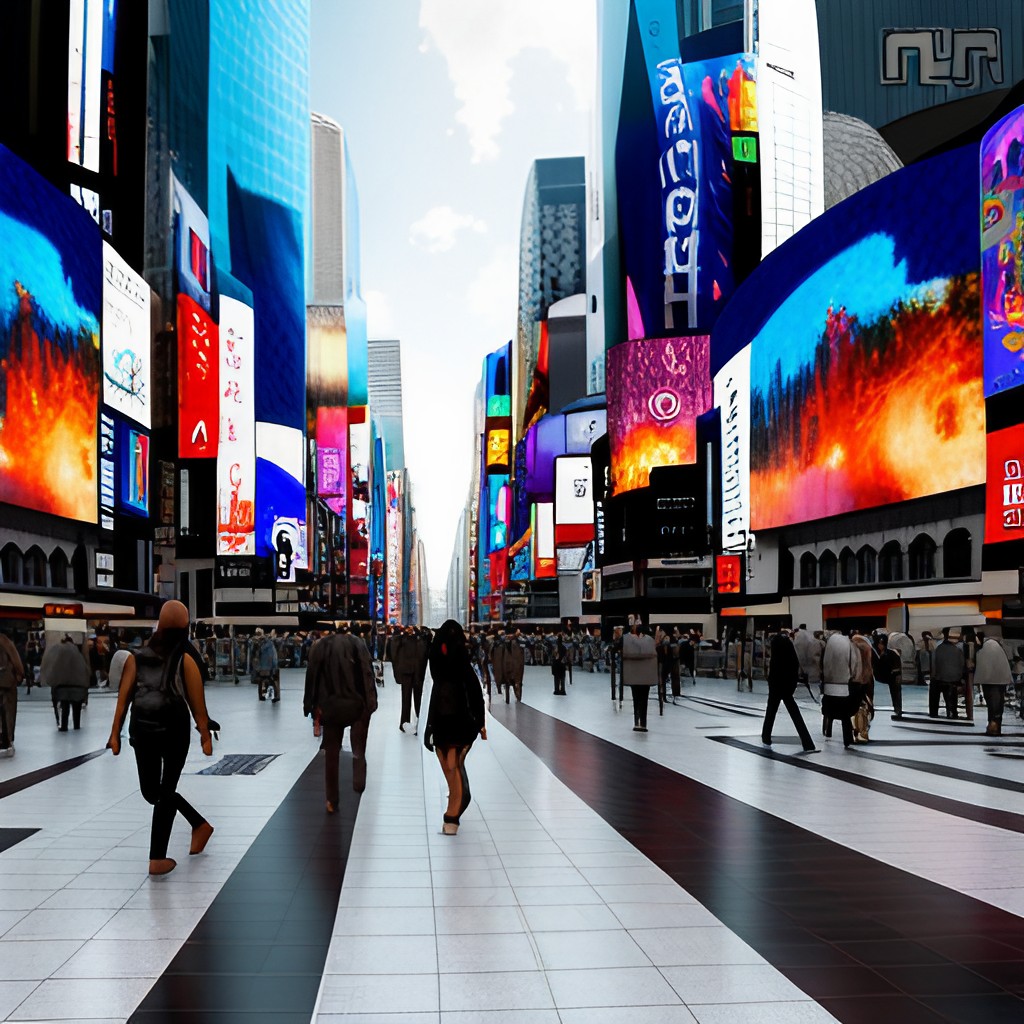The Metaverse 3D is a rapidly growing technology that combines virtual reality, augmented reality, and mixed reality to create a fully immersive digital world. In the Metaverse 3D, users can interact with each other and the environment in a way that feels almost lifelike. This technology has the potential to revolutionize the way we work, play, and connect with others.
Virtual reality is a key component of the Metaverse 3D. By using specialized headsets and controllers, users can enter a virtual world that feels like a real-life experience.
Augmented reality and mixed reality, on the other hand, allow users to overlay digital information onto the physical world, creating a hybrid experience that blends the real and virtual worlds. With the Metaverse 3D, users can seamlessly switch between these different modes of interaction, creating a truly immersive experience.
What is 3D Metaverse?
The 3D metaverse is a virtual space where users can interact with each other and the digital environment in three dimensions. It is an immersive experience that allows users to participate in a virtual world and interact with other users in real-time. The metaverse is an extension of the internet, where users can experience a 3D world and interact with each other.
How does Metaverse 3D work?
The 3D metaverse is built on core technologies such as virtual reality (VR), augmented reality (AR), and blockchain. Users can access the metaverse through VR headsets and other devices that allow them to interact with the digital environment. The 3D metaverse is a shared space where users can create, explore, and interact with each other.
Core Technologies
The core technologies that enable the 3D metaverse include VR, AR, and blockchain. VR and AR technologies create a virtual environment that users can interact with, while blockchain technology provides a secure and decentralized platform for transactions within the metaverse.
Top 5 3D Metaverse Platforms / Apps list
- Decentraland: A blockchain-based 3D metaverse where users can buy, sell, and build virtual real estate.
- Second Life: A virtual world where users can create avatars and interact with each other in a 3D environment.
- VRChat: A social VR platform that allows users to create and join 3D worlds and interact with others in real-time.
- Sansar: A 3D platform for creating and sharing social VR experiences.
- High Fidelity: A VR platform that allows users to create and explore 3D worlds and interact with others in real-time.
3D metaverse is an immersive virtual space that allows users to interact with each other and the digital environment in three dimensions. It is built on core technologies such as VR, AR, and blockchain, and there are several platforms and apps available that allow users to experience the metaverse.
Metaverse 3D Software
Metaverse 3D software refers to the tools that enable the creation of 3D content for use in the metaverse. These tools allow designers and developers to create virtual environments, objects, and characters that can be used in various applications such as gaming, education, and e-commerce.
Here are the top 5 Metaverse 3D software:
- Unity Unity is a popular game engine that is widely used in the gaming industry. It offers a range of tools for creating 3D content, including a visual editor, scripting tools, and physics simulation. Unity also supports a range of platforms, including PC, mobile, and VR.
- Unreal Engine Unreal Engine is another popular game engine that is used in the gaming industry. It offers a range of tools for creating 3D content, including a visual editor, scripting tools, and physics simulation. Unreal Engine also supports a range of platforms, including PC, mobile, and VR.
- Blender Blender is a free and open-source 3D creation software that can be used for creating 3D content for the metaverse. It offers a range of tools for creating 3D models, animations, and simulations. Blender also supports a range of platforms, including PC, Mac, and Linux.
- Maya Maya is a 3D animation and modeling software that is widely used in the film and gaming industries. It offers a range of tools for creating 3D content, including a visual editor, scripting tools, and physics simulation. Maya also supports a range of platforms, including PC, Mac, and Linux.
- Cinema 4D Cinema 4D is a 3D modeling, animation, and rendering software that is widely used in the film and advertising industries. It offers a range of tools for creating 3D content, including a visual editor, scripting tools, and physics simulation. Cinema 4D also supports a range of platforms, including PC and Mac.
Metaverse 3D software provides designers and developers with the tools they need to create immersive 3D content for use in the metaverse. The top 5 Metaverse 3D software include Unity, Unreal Engine, Blender, Maya, and Cinema 4D.
How to Learn 3D Modeling in the Metaverse
Learning 3D modeling in the Metaverse can be an exciting and rewarding experience. Here are some ways to get started:
Attend Workshops and Tutorials
One of the best ways to learn 3D modeling in the Metaverse is to attend workshops and tutorials. These sessions are often hosted by experienced 3D artists who can teach you the basics of creating 3D models and using different software tools. You can find these workshops and tutorials on social media platforms, online forums, and even in the Metaverse itself.
Join Online Communities
Joining online communities is another great way to learn 3D modeling in the Metaverse. These communities often have forums where you can interact with other artists, ask questions, and get feedback on your work. Some popular online communities for 3D modeling in the Metaverse include Reddit, Discord, and Facebook groups.
Use Online Resources
There are many online resources available for learning 3D modeling in the Metaverse. These resources include online courses, video tutorials, and articles. Some popular online resources for 3D modeling in the Metaverse include Udemy, YouTube, and CGTrader.
Practice, Practice, Practice
Finally, the best way to learn 3D modeling in the Metaverse is to practice. The more you practice, the better you will become. Start by creating simple models and work your way up to more complex designs. Don’t be afraid to experiment and try new things. With enough practice, you’ll be able to create amazing 3D models in no time.
Design and Interaction
Creating 3D Assets
Designing 3D assets for the metaverse involves creating models, textures, and animations that can be used in virtual spaces. One of the most popular tools for creating 3D assets is Blender, an open-source software that allows users to create and edit 3D models.
Adobe also offers a suite of tools for creating 3D assets, including Adobe Dimension and Adobe Substance 3D. To ensure compatibility across platforms, the Universal Scene Description (USD) format is often used to exchange 3D assets between different software applications.
User Experience in Virtual Spaces
Designing user experiences in virtual spaces requires careful consideration of how users will interact with the environment.
This includes designing intuitive interfaces, creating clear navigation, and ensuring accessibility for users with different abilities. To create immersive experiences, designers often use techniques such as spatial audio and haptic feedback to enhance the user’s sense of presence in the virtual space.
Avatars and Digital Identity
Avatars are a key aspect of digital identity in the metaverse. Designing avatars that reflect the user’s identity and personality is an important part of creating a sense of belonging in virtual spaces.
To ensure a consistent user experience across different platforms, the creation of avatars is often standardized using industry-wide specifications such as the Virtual World Framework (VWF) and the Open Metaverse Avatar (OMA) standard.
Designing for the metaverse requires a combination of technical skills, creativity, and a deep understanding of user needs. By creating 3D assets, designing user experiences, and crafting avatars, designers can help create immersive and engaging virtual spaces that enable users to interact with each other in new and exciting ways.
Business and Commerce
Digital Economy and Tokens
The metaverse enables the creation of a digital economy that operates using virtual currencies and tokens. These tokens can be used to buy, sell, and trade digital assets such as virtual goods, virtual real estate, and even virtual experiences.
The blockchain technology that underpins the metaverse allows for secure and transparent transactions, ensuring that ownership and authenticity of digital assets are maintained. Moreover, the use of non-fungible tokens (NFTs) has revolutionized the concept of digital ownership, allowing for unique and rare digital assets to be traded.
Retail and Ecommerce
Metaverse-based retail and ecommerce present new opportunities for businesses to engage with customers in a more immersive and interactive way. The metaverse enables retailers to create virtual storefronts that offer customers a 3D shopping experience.
Customers can interact with products, see them in 3D, and even try them on virtually. Metaverse-based retail and ecommerce also enable businesses to create personalized experiences for customers, making use of data from their virtual interactions to tailor their offerings.
Virtual Real Estate
Virtual real estate is another area where the metaverse is having a significant impact. The metaverse enables the creation of virtual domains that can be bought, sold, and developed.
Virtual real estate has become a valuable asset, with some virtual properties selling for millions of dollars. The use of blockchain technology ensures that ownership of virtual real estate is secure and transparent, and the use of NFTs enables unique and rare virtual properties to be traded.
The metaverse is revolutionizing the way that businesses operate in the digital space. The creation of a digital economy, the use of blockchain technology, and the development of virtual real estate are just some of the ways that the metaverse is changing the face of commerce.
As the metaverse continues to evolve, businesses that embrace this new technology will be well-positioned to thrive in the digital age.
Social and Collaborative Aspects
The Metaverse is a shared online 3D space where users can interact with each other and with objects synchronously. This section will explore the social and collaborative aspects of the Metaverse.
Communication and Networking
The Metaverse offers a new way for people to communicate and network with each other. Users can interact with each other in real-time, regardless of their physical location.
Social media platforms are integrated into the Metaverse, making it easier for people to connect with each other. Users can create avatars and digital personas to represent themselves and interact with others.
Gaming and Entertainment
Gaming and entertainment are an essential part of the Metaverse. Users can participate in various games and activities, such as virtual concerts, movies, and other events. The Metaverse provides a new level of immersion in gaming and entertainment, allowing users to interact with the virtual environment and other users in real-time.
Education and Training
The Metaverse has great potential for education and training. It provides a new way for people to learn and collaborate with each other. The Metaverse can be used for team-building exercises, simulations, and training programs. Educational institutions can use the Metaverse to provide immersive learning experiences for their students.
The Metaverse provides a new way for people to interact with each other and collaborate on various activities. The social and collaborative aspects of the Metaverse are essential for its success and adoption.
Frequently Asked Questions
What software is used for creating 3D models in the metaverse?
The software used for creating 3D models in the metaverse varies depending on the platform of the metaverse. Some popular software for creating 3D models includes Blender, Unity, Unreal Engine 4, and Maya. Blender is a free and open-source software that is widely used for creating 3D models.
Unity and Unreal Engine 4 are game engines that allow users to create 3D models and environments. Maya is a 3D modeling software that is used in the film and animation industry.
How can one learn to design 3D environments for virtual worlds?
There are many resources available for learning to design 3D environments for virtual worlds. Online courses, tutorials, and forums can be helpful in learning the necessary skills.
Some popular online courses include those offered by Udemy, Coursera, and LinkedIn Learning. YouTube tutorials and forums like Reddit and Stack Exchange can also be useful for learning and troubleshooting.
What are the best practices for integrating AR/VR models into the metaverse?
The best practices for integrating AR/VR models into the metaverse include optimizing the models for real-time rendering, using efficient file formats, and ensuring compatibility with the platform. It is also important to consider the user experience and ensure that the models are intuitive and easy to interact with.
Which companies offer professional 3D modeling services for metaverse applications?
There are many companies that offer professional 3D modeling services for metaverse applications. Some popular companies include Autodesk, Unity, and Unreal Engine 4. These companies offer a range of services, from creating custom 3D models to developing entire virtual environments.
How do 3D game models differ from those used in the metaverse?
3D game models and those used in the metaverse differ in their purpose and design. Game models are designed for a specific game and are optimized for performance, while those used in the metaverse are designed for use in a virtual environment and are optimized for real-time rendering. Game models are often designed with a limited view in mind, while those used in the metaverse must be designed to be viewed from any angle.
What are the key considerations when choosing a 3D modeling company for metaverse projects?
When choosing a 3D modeling company for metaverse projects, it is important to consider their experience and expertise in creating models for virtual environments. It is also important to consider their ability to work within the constraints of the platform and their ability to optimize models for real-time rendering. It is important to consider their communication skills and ability to work collaboratively with clients.
Is metaverse 3D or 4D?
The metaverse is typically considered to be 3D, as it is a virtual environment that is experienced through a 2D screen. However, some argue that the metaverse could be considered 4D, as it is a virtual environment that is experienced over time.
What 3D software for metaverse?
The 3D software used for the metaverse varies depending on the platform. Some popular software includes Blender, Unity, Unreal Engine 4, and Maya. Blender is a free and open-source software that is widely used for creating 3D models, while Unity and Unreal Engine 4 are game engines that allow users to create 3D models and environments. Maya is a 3D modeling software that is used in the film and animation industry.



